Grow these hardy medicinal herbs in climates where herbs often fail to thrive. Enjoy their healthy traits, scents, and flavors by growing them close to hand in your own garden.
I homestead in a Northern climate, in Canada. While most of the people around me benefit from a moderate zone 5 climate, I’m in a mountain valley at 2700 feet. I can get frost any day of the year, in zone 3. So I need to pick herbs that can withstand frost. Being in a rural area, I don’t have a family doctor and so for illness and accident, we have to be our own doctor. The emergency room is 30 minutes away. But any real emergency is airlifted to a real hospital about 2 hours from here, by car. Herbs help us stay healthy. We haven’t had a prescription in over 11 years and the only over-the-counter meds on hand are vitamins and veterinary medicines.
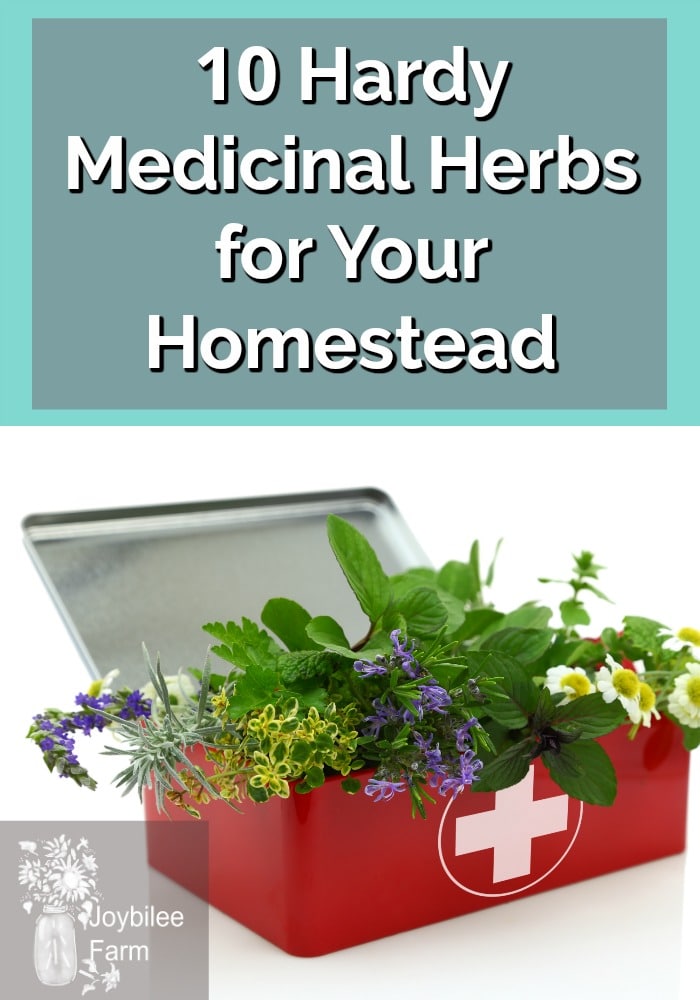
Taking a pill isn’t the same as using whole herbs. While pills are isolated “active” ingredients, herbs work in synergy with all the different parts of a plant adding to the holistic healing properties. So grow your own and learn to use them before a complaint gets serious. Of course, call your own doctor or naturopath for serious complaints. This list isn’t a substitute for an expert medical opinion. But for a little bit of independence and self-reliance check out this list and plan your garden accordingly.
This is part 1 of a series of articles on Growing and using Herbal medicine.
Part 2 – 10 Must Have Medicinal Herbs from your Grocery Store
Part 3 – Making Horehound cough drops and lozenges for your Homestead Medicine Chest
1. Oregano
Oregano (origanum vulgare) is a perennial herb, common in the kitchen garden, and used to flavor sauces and soups. But it is also a potent immune booster. It is antibacterial, anti-fungal, and antiviral. It works especially well on respiratory complaints, sinus congestion, coughs, and lung congestion. We use oregano oil, instead of antibiotics, with lambs with pneumonia, too. While Oregano oil is Essential oil of marjoram (wild oregano) that has been diluted with a carrier oil. Strong oregano tea is also effective for colds, and flu symptoms. Oregano is also an analgesic, antiseptic, diuretic, neurotonic, vasodilator. Thyme and marjoram may also be used in the same way. Thyme and marjoram are stronger than oregano.
Oregano is a perennial herb, so once you get it established it will give you many years of use. There are several varieties. Wild Greek oregano is hardy to zone 5, but I grow it successfully at Joybilee Farm, with our ample winter snow. You can use it fresh or dried.
For medicinal use brew a handful of leaves in a litre of water, let sit for 10 minutes, strain and drink throughout the day.
To dry it, harvest it just before flowering, tie in bundles, and dry in a warm, airy place away from sunlight. Once it is dry, strip the leaves from the stalks, and store the leaves in glass jars in the dark.
Oregano can be grown in partial shade. It doesn’t require rich soil. If you are warmer than zone 4, this hardy medicinal herb with self-proliferate as well.
2. Yarrow
Yarrow (Achillea millefolium) is an herb of the pasture and waste places, but there are garden varieties you can grow. All of the above ground parts of the plant are medicinal. It is diaphoretic, hypotensive, astringent, diuretic, antiseptic, anti-catarrhal, emmenagogue, hepatic, stimulant, and tonic. It is a perennial herb, so harvest it by cutting the plant, when in flower, just below the last set of leaves, don’t pull it out by the roots. The white variety is hardy to zone 3 and is the most medicinally active. It grows wild around me. It has a strong medicinal smell. You can use it in tea, as you would oregano, but I prefer to make a tincture of it.
To make a tincture, fill a glass jar with the herb. Pack it in tightly. Cover with vodka. Place in a sunny window and allow to steep for 2 weeks. The liquid will turn dark green. Strain and bottle. Keep in a cool, dark place. To use pour 1 tsp. into a 1/2 glass of water and drink.
3. Balm of Gilead
Balm of Gilead (populus gileadensis) is the sticky, red resin that exudes from the Spring buds of the Black Cottonwood tree. It is the perfume of Spring around me. Trees are slightly less remembered for being hardy medicinal herbs, but your local trees are still a valuable source of medicine. 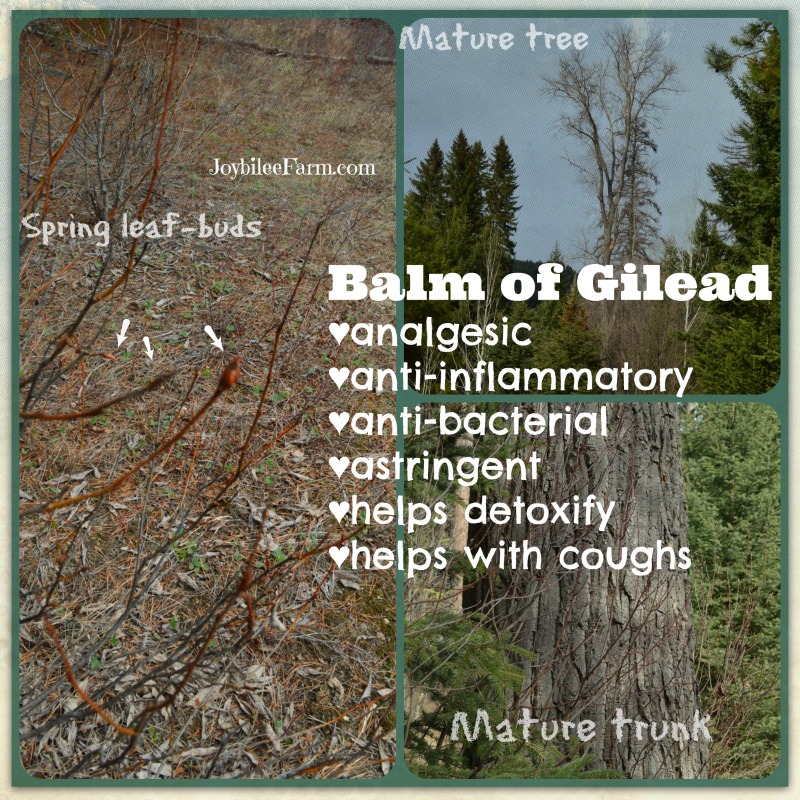
It soothes, disinfects and astringes the mucous membranes. Balm of Gilead is an excellent remedy for sore throats, coughs, and laryngitis that is accompanied by loss of voice. It may be used in chronic bronchitis. Externally it can be used to ease inflammation due to rheumatism and arthritis, as well as for dry and scaly skin conditions such as psoriasis and dry eczema. – The Complete illustrated Holistic Herbal by David Hoffman.
We’ve also used it successfully, along with St. John’s Wort to heal the pain from broken bones, after the bone has been set. As well as for back pain from strains, with the use of over the counter medicines.
You harvest the buds from the tree anytime after leaf drop in the fall and before bud break in the Spring. Your fingers will get coated with the sticky resin, but if you find aspen trees growing nearby, just rub your fingers over the bark, and it acts like corn starch to keep your fingers from getting too sticky. Place the freshly harvested buds into a 1 liter glass jar, pour olive oil over the buds. Place in a sunny window and allow to steep for 2 weeks. The oil will turn a dark red.
Balm of Gilead is anti-inflammatory, and analgesic. Mix with beeswax, coconut oil, and cocoa butter to make a salve for aching joints and inflammation.
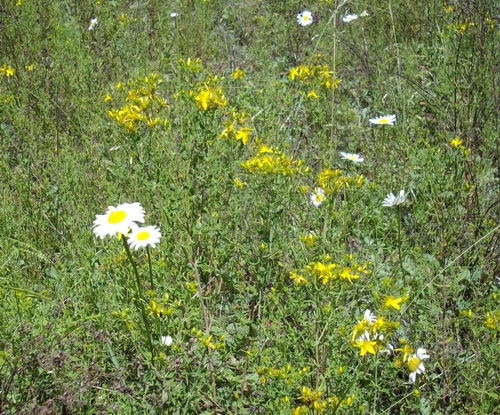
4. St. John’s Wort
St. John’s Wort (Hypericum perforatum) is perennial and an herb of pastures and waste places. You can find it growing wild and it is hardy to zone 3. It prefers dappled sun and you may find it on the edges of woods and in clearings, or along paths. Harvest just the flowers when they open in late June or Early July. Its called St. John’s Wort because in Europe, where it is native, it opens on June 24th, St. John the Baptist’s saints day. You may have read about it being used as a treatment for depression. It is very effective against seasonal depression. But it is also useful as an analgesic, to heal nerve pain and accelerate nerve healing. It is anti-inflammatory and pain relieving. It is also sedative and helps with sleeplessness and nervous anxiety and reduces fever. This is one of my favorite hardy medicinal herbs, since it grows wild.
There is some concern about sensitivity to sunlight for those taking St. John’s Wort and all the herbal literature warns against exposure to sunlight. But we have used this herb regularly for over a decade and find that we are less sensitive to sunlight, probably due to the strong antioxidant properties of using the whole herb.
We harvest just the flower heads, leaving the plant to continue growing for next year’s harvest. It will spread from the roots. Put the flower heads in a glass jar and cover with olive oil, if you intend to use it for joint relief and in a salve. Cover it with vodka to use it internally in a tincture. Tincture does is 1 tsp. in a cup of water at bedtime.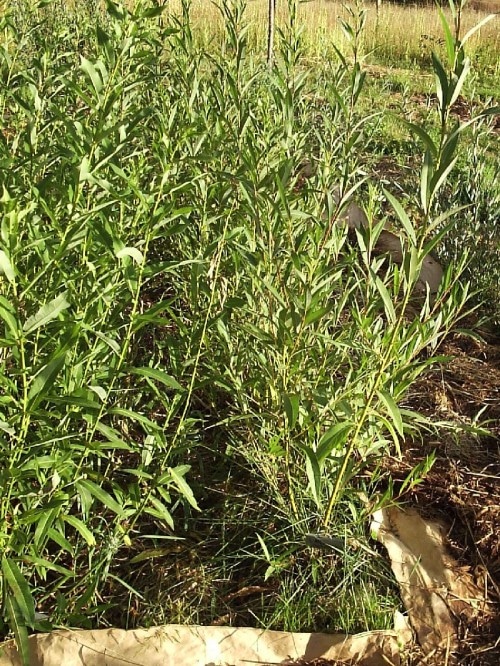
5. Willow
Willow (salix alba, s. triandra, s. viminallis) is from the same family as cottonwood and has analgesic (painkilling) and anti-inflammatory properties. It is also anti-pyretic, anti-septic, astringent, and vulnerary. You use the bark of white willow and basket willow varieties, a waste product if you are stripping your branches for weaving baskets. The best time to strip the bark is in the spring when the sap rises and before leaf break. To use it, dry the bark. Use a handful of bark to 1 liter of boiling water. Simmer for 5 minutes. Cool. Stain out the bark. Sweeten with honey and drink a cup for pain relief.
6. Mint
Mint ( Mentha x piperita) is a perennial herb that grows prolifically. Put it in a place in your garden where it can be allowed to spread. Avoid putting several varieties of mint in the same garden bed. If you have several varieties, spread them away from each other, to keep the flavors distinct. My favorite mint is a very strong “chocolate mint” that moved with me from the coast. It is analgesic, and antibacterial. It dilates the nasal passages and this makes it a good adjunct for cold symptoms, like a stuffy nose. It is also an appetite stimulant, and it helps with the digestion of fats. It is also cheering and elevates mood. The herb books describe its actions as: “carminative, anti-spasmodic, aromatic, diaphoretic, anti-emetic, nervine, analgesic, anti-catarrhal, anti-microbial, emmenagogue, rubefacient, stimulant.” (Hoffman, p. 113) Mint is one of the easiest hardy medicinal herbs to grow.
Harvest the branches before flowering. It will continue to grow and you may get several harvests in a summer. Tie in bundles and dry in a warm, shaded spot. Strip the leaves from the stocks and store in glass jars, in a cool, dark room. To use brew 1 tsp. of leaves in a teapot. Drink while tea is hot.
7. Wild Rose
Wild roses (Rosa canina) grow profusely in my zone 3 area. I harvest the petals and the rose hips. Both are excellent for skin conditions. The rose hips provide a very good source of vitamin C in Northern areas. To use the petals, harvest in the early morning, while the dew is still on them. Place in a glass jar, cover with olive oil. Allow steeping in a sunny window for 2 weeks. Strain the oil. Add vitamin E to preserve it. Store in a glass jar in a cool, dark place. Use it as an addition to skin creams.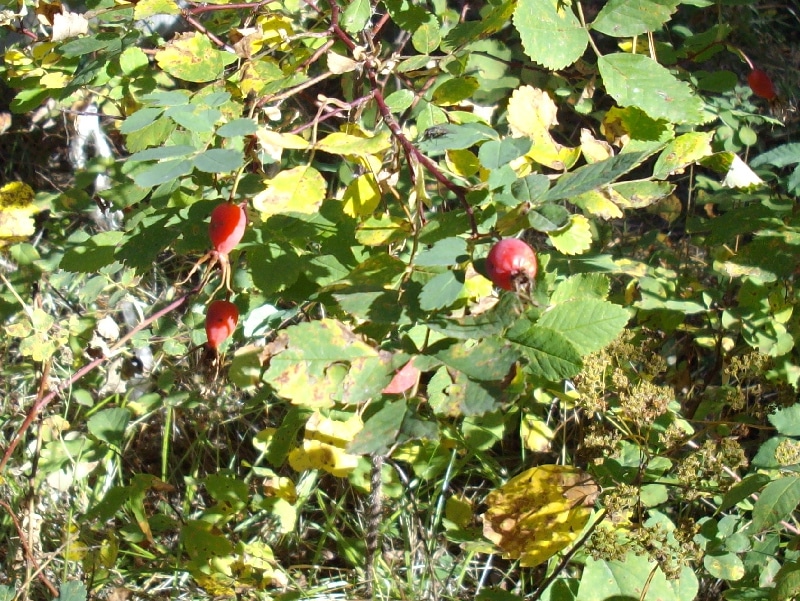
The hips are nutritive, mildly diuretic, and a mild astringent. To harvest rose hips, wait until the leaves are gone from the rose bushes and the hips have had a frost. Harvest hips. Remove the seeds and the blossom end of the hips.
At this point, you can make rose hip jelly or rose hip syrup. Or you can dry them on low heat, in your dehydrator, and use them as a tea during the winter. Rosehips are the best Northern source of vitamin C.
Domestic roses also have some medicinal benefits, and classify as a hardy medicinal herb no matter their variety. Use whatever you have growing in your own backyard.
8. Skull Cap
Skull cap is a perennial herb, from the mint family, that grows near streams and creeks. It prefers wet ground. It is useful for calming and helps with seizures, and nervousness. Skull Cap (Scutellaria laterifolia) is a nerve tonic, sedative, analgesic, hypnotic, and anti-spasmodic.
To harvest, it cut the above ground parts late in the flowering period. Dry it in bundles in a warm, airy place in the shade. Use the dry herb as a tea.
9. Chamomile
Chamomile ( Chamaemelum nobile, Matricaria recutita) both Roman and German chamomiles are annual. Oxeye daisy (Chrysanthemum leucanthemum) also shares the properties of chamomile, so you have several choices to get the calming effects of this daisy-like herb. Oxeye daisy is slightly more of a hardy medicinal herb than chamomile, chamomile can be sensitive to frost. Chamomile and its cousins are anti-inflammatory, antispasmodic, anti-parasitic, calming, reduces fever, and is a diuretic. In babies, it reduces the pain of teething, earache, and colic. Harvest the blossoms and dry them in the shade. Use it in tea.
Leftover tea can be used as a hair rinse for fair hair to accentuate blonde highlights.
10. Calendula
Another daisy-like flower that is a hardy annual. Begin the plants indoors from seed to extend the harvest. Allow some plants to set seed in mid-summer to save your own seed. If you harvest the blossoms, the plants will continue to set new blossoms but you will delay seed setting. Although plants can withstand a light frost, if they don’t set seed until Fall, you may get poor pollination after regular frosts set in. Grow Calendula (Calendula officinalis) for its blossoms that contain strong skin healing properties. Calendula is anti-inflammatory, astringent, vulnerary, anti-microbial, cholagogue, emmenagogue, and tonic.
Harvest the blossoms between early summer and fall and allow macerating in olive oil for up to two weeks. Strain, add 1/4 tsp. vitamin E oil, and store in a cool, dark place. Add to your homemade hand lotions and first aid creams.
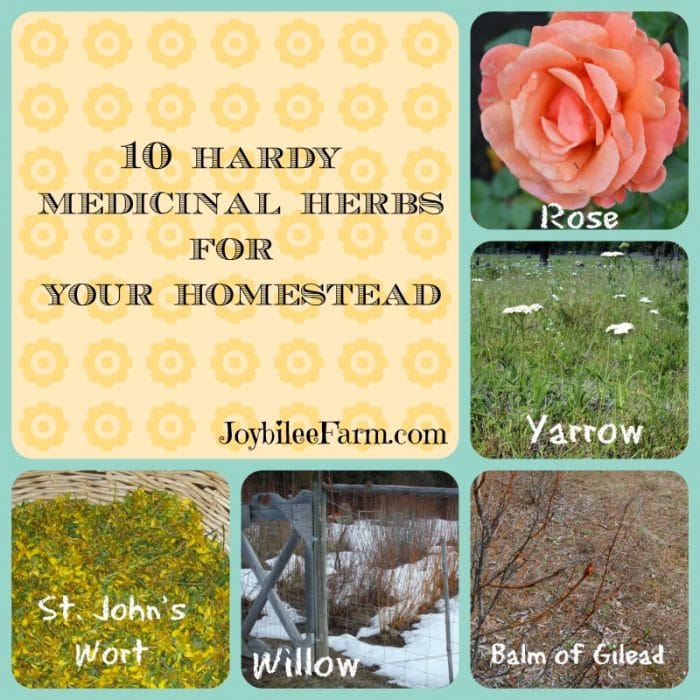
When harvesting herbs from your own garden, you are sure to get the right herb for your complaint. But when harvesting herbs from the wild, check out a pictorial guide to ensure that you identify the plants correctly. Here are a few medicinal herbals to help you:
The Herbal Medicine-Maker’s Handbook: A Home Manual
Backyard Medicine: Harvest and Make Your Own Herbal Remedies
Encyclopedia of Herbal Medicine: The Definitive Home Reference Guide to 550 Key Herbs with all their Uses as Remedies for Common Ailments (Hardcover) by Andrew Chevallier
An Herbal Education:
Is it time you immersed yourself in learning about herbs? I’m halfway through the Intermediate Herbal Course at The Herbal Academy of New England. Even though I’ve been using herbs for over 30 years, I’m learning so much more about their benefits through this online course that I’m excited all over again. In June HANES opened the Introductory Herbal Course — a course that gives you the basics for using herbs every day with your own family, for a healthier future. Check it out.
Back to you:
What is your favourite hardy medicinal herb to grow? How do you use it? Let’s talk.
Ginger for Colds and Flu
Ginger might be as close as your kitchen spice cupboard. Ginger is a superb and easy to find herb that can increase circulation, aid digestion, and relieve many symptoms of the common cold or the flu. If you need an herbal remedy for cold and flu season and you need it right now, Ginger, will meet you where you are at.
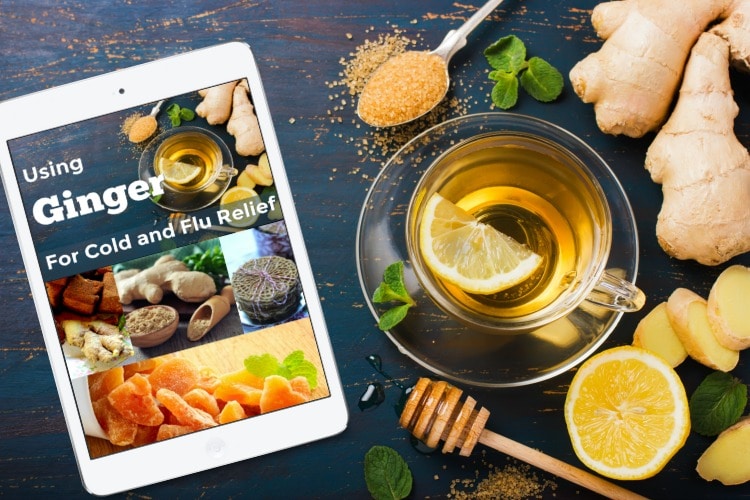
Grab my FREE ebook, “Using Ginger for Cold and Flu Relief” and get the help you need tonight. Tomorrow gather the five antiviral herbs and get your Anti-viral tincture started. Tonight mix up an easy ginger drink for quick relief of the aches and pains, sore throat, and the general unwell feelings from the common cold.



This post is great source of information which is useful for all. A lot of thanks for sharing with us…